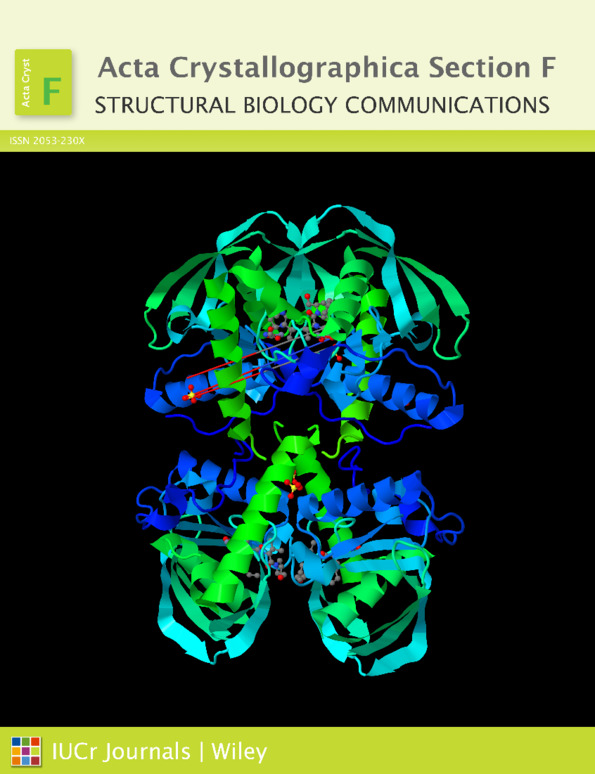Structural characterization of dUTPase from Legionella pneumophila
Abstract
Cellular deoxyuridine 5′-triphosphate nucleotidohydrolases (dUTPases) catalyze the hydrolysis of deoxyuridine triphosphate (dUTP) to deoxyuridine monophosphate (dUMP) and pyrophosphate (PPi). dUTPase is an essential metabolic enzyme which maintains the homeostatic dTTP:dUTP ratio. As DNA polymerases are unable to distinguish between thymine and uracil during replication, the dTTP:dUTP ratio is essential for preventing the misincorporation of uracil into DNA. In the absence of dUTPase regulation of the dTTP:dUTP ratio, many DNA double-strand breaks are induced by DNA-repair enzymes, which may ultimately lead to cell death. Legionnaires' disease is a rare but severe respiratory infection caused primarily by Legionella pneumophila serogroup 1. Increased characterization of the L. pneumophila proteome is of interest for the development of new treatments. Many DNA metabolism proteins have yet to be characterized in L. pneumophila, including dUTPase. Here, we present analysis of two crystal structures of L. pneumophila dUTPase in its apo and dUMP-bound states, determined to 1.80 and 1.95 Å resolution, respectively. The structures were solved by the Seattle Structural Genomics Center for Infectious Disease (SSGCID) as part of their mission to determine structures of proteins and other molecules with an important biological role in human pathogens.




